
On this day in Tudor history, 31st March, the dying Henry VII made his will; Friar William Peto compared Henry VIII to Ahab and Anne Boleyn to Jezebel; and metaphysical poet and satirist John Donne died…
[Read More...]
On this day in Tudor history, 31st March, the dying Henry VII made his will; Friar William Peto compared Henry VIII to Ahab and Anne Boleyn to Jezebel; and metaphysical poet and satirist John Donne died…
[Read More...]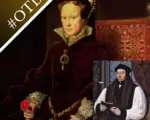
On this day in Tudor history, 30th March, Thomas Cranmer was consecrated as Archbishop of Canterbury; Robert Ferrar, Bishop of St David’s, was burnt to death; Mary I made her will, believing she was pregnant; and administrator Sir Ralph Sadler died…
[Read More...]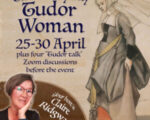
Join me for “The Everyday Tudor Woman” event from April 25th to April 30th! Dive into the fascinating world of Tudor history as we explore the lives of everyday women from the 16th century.
[Read More...]
Today, it’s Good Friday – in the Western Calendar anyway – so I wanted to share with you how this feast day was marked in medieval and Tudor times.
Here’s a talk I did a few years ago about the medieval and Tudor traditions associated with Good Friday.
[Read More...]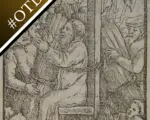
On this day in Tudor history, 29th March, Mary Dudley, who would later make a great sacrifice in nursing Elizabeth I through smallpox, married Henry Sidney; Protestant John Laurence was burnt at the stake in Colchester; and playwright and clergyman William Wager was buried…
[Read More...]
In 1561, Elizabeth I received a rather unusual New Year’s gift. It wasn’t the normal gilt plate, it wasn’t even jewellery or a piece of clothing, it was a girl…
[Read More...]
On this day in Tudor history, 28th March, the Renaissance artist Raphael was born; Anne Boleyn’s former chaplain and almoner John Skip, Bishop of Hereford, died; and five Protestants were burnt at the stake for heresy…
[Read More...]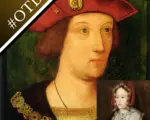
On this day in Tudor history, a treaty arranged the marriage of Arthur Tudor, Prince of Wales, and Catherine of Aragon; a young apprentice was burnt to death for reading the Bible; and George Talbot, 4th Earl of Shrewsbury, was buried…
[Read More...]
I’ve been lucky enough to see historian and actress play Mary, Queen of Scots, at Tutbury Castle, where Lesley is custodian, so I’m very disappointed that I can’t make this event. I know she’ll do a terrific job portraying Anne Boleyn in her last 45 minutes on earth.
[Read More...]
On this day in Tudor history, 26th March, the Vestments Controversy of Elizabeth I’s reign was started; Sir Robert Carey arrived at Holyrood to inform King James VI of Scotland that he was now King of England; and John Dee, astrologer, mathematician, alchemist, antiquary, spy, philosopher, geographer and adviser to Elizabeth I, died..
[Read More...]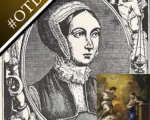
On this day in Tudor history, 25th March, Lady Day was celebrated and the calendar new year began, and Catholic martyr Margaret Clitherow, the Pearl of York, was pressed to death for harbouring Catholic priests…
[Read More...]
Yesterday, Palm Sunday, was the start of Holy Week, the week leading up to Easter Sunday, or Resurrection Sunday, which, of course, commemorates the resurrection of Christ.
It was an important time in Tudor England, as it still is in many countries and communities today. You can find out more about how Easter was celebrated in Tudor times
[Read More...]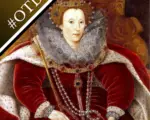
On this day in Tudor history, 24th March, judge and Speaker of the House of Commons, Sir James Dyer, died; Queen Elizabeth I died at Richmond Palace; and Robert Rich, Earl of Warwick, died…
[Read More...]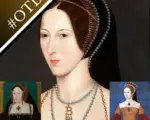
On this day in Tudor history, 23rd March, while the pope proclaimed Catherine of Aragon to be England’s true queen and Mary the heir to the throne, Parliament declared Anne Boleyn to be the rightful queen and her daughter, Elizabeth, the heir; Waltham Abbey was dissolved; and soldier, MP and diplomat Sir Henry Unton died…
[Read More...]
Following the death of her husband, Henry Fitzroy, Duke of Richmond and Somerset, Mary Howard’s father, Thomas Howard, Duke of Norfolk, put forward the idea that his daughter should marry the up and coming Thomas Seymour, but Mary wasn’t keen. In hindsight she had a rather lucky escape.
Let me tell you more…
[Read More...]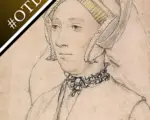
On this day in Tudor history, 22nd March, patroness of Reform Katherine Willoughby, Duchess of Suffolk, was born; Edward Seymour, Earl of Hertford, replaced the out of favour Henry Howard, Earl of Surrey, as lieutenant general in Calais; and gunner and mathematician William Bourne was buried…
[Read More...]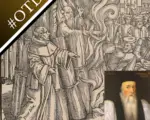
On this day in Tudor history, 21st March, Puritan Sir John Leveson, a man who helped put down Essex’s Rebellion, was born; Archbishop Cranmer was burnt at the stake in Oxford for heresy; and a dying Elizabeth I took to her bed…
[Read More...]
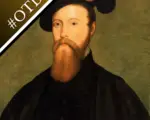
On this day in Tudor history, 20th March, Catholic priest and martyr Cuthbert Mayne was baptised; Thomas Seymour, 1st Baron Seymour of Sudeley and Edward VI’s uncle, was executed for treason; and Mary Bassett, translator and granddaughter of Sir Thomas More, died…
[Read More...]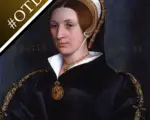
On this day in Tudor history, 19th March, Arthur Brooke, who wrote the first version of the story of Romeo and Juliet in English, died in a shipwreck; Elizabeth Seymour, Lady Cromwell, died; and Henry VIII’s barber, Edmund harman, died…
[Read More...]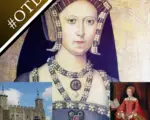
On this day in Tudor history, 18th March, Mary Tudor, Queen of France, was born; Lady Elizabeth (Elizabeth I) was arrested and taken to the Tower of London; and Sir Christopher Blount was executed for his part in the rebellion of his son-in-law, the Earl of Essex…
[Read More...]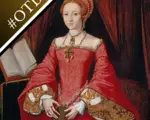
On this day in Tudor history, 17th March, the Lady Elizabeth (Elizabeth I) delayed her arrest by writing her famous Tide Letter to her half-sister Mary I; theologian Alexander Alesius died in Edinburgh; and soldier and courtier William Herbert, 1st Earl of Pembroke, died at Hampton Court Palace…
[Read More...]
On this day in Tudor history, 16th March, soldier, translator and diplomat John Bourchier, 2nd Baron Berners, died; priests Robert Dalby and John Amias were executed at York as traitors; and actor Richard Burbage was buried…
[Read More...]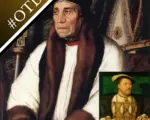
On this day in Tudor history, 15th March, Archbishop William Warham criticised Henry VIII in Parliament and was rewarded with foul language from the king; the Lady Mary (Mary I) publicly defied her half-brother Edward VI; and the imprisoned John Hooper was deprived of his bishopric…
[Read More...]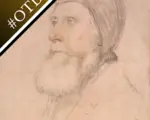
On this day in Tudor history, 14th March, judge Sir John Port, who is known for mumbling in a case, which had serious repercussions, died; Bishop Arthur Bulkeley, former chaplain to Charles Brandon and Thomas Cromwell, died; and Sir John Russell, Lord Privy Seal, died…
[Read More...]
On this day in Tudor history, 13th March, Henry Bourchier, 2nd Earl of Essex, died after a horse-riding accident; Welshman Sir Gelly Meyrick was hanged, drawn and quartered after the rebellion of his master, the Earl of Essex, and Elizabethan actor Richard Burbage died…
[Read More...]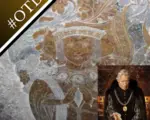
On this day in Tudor history, a Cistercian monk was hanged for his involvement in the Pilgrimage of Grace; Thomas Boleyn, Earl of Wiltshire and Ormond, and father of Queen Anne Boleyn, died at Hever Castle; and Catholic priest and martyr Christopher Bales was baptised…
[Read More...]
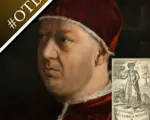
On this day in Tudor history, 11th March, Giovanni di Lorenzo de’ Medici was proclaimed Pope Leo X, poet William Warner, “Our English Homer”, was buried, and poet, diplomat and MP Giles Fletcher the Elder died in London…
[Read More...]